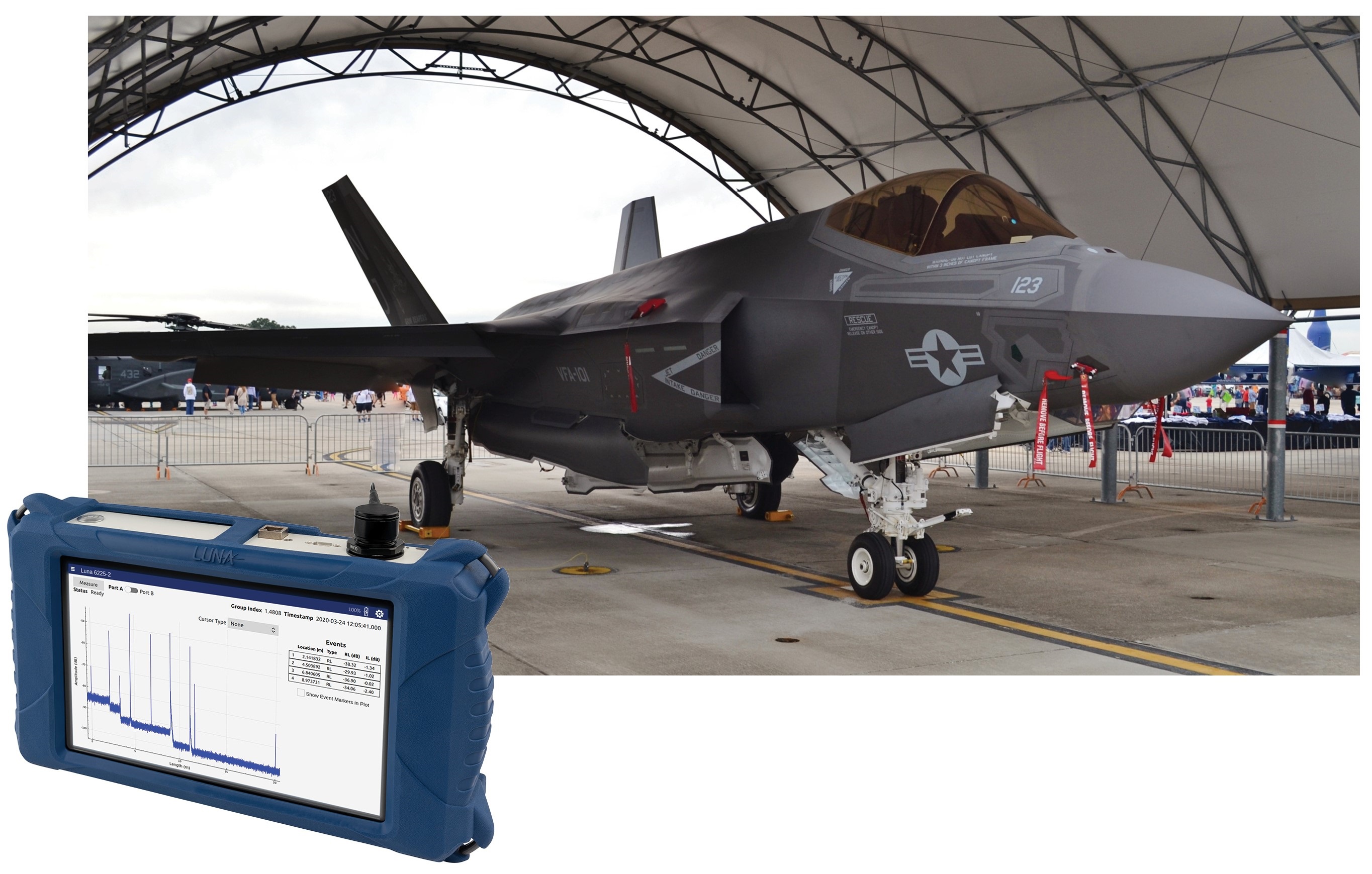The OBR 6200: Rugged, Portable Reflectometer for the Aerospace and Military Industries
The complex communications and sensing systems inside aircraft, helicopters, submarines, and navy ships require massive real-time data transfers ~ 10s of gigabits/sec. Due to its lightweight, immunity to electromagnetic interference [EMI], increased security, high bandwidths/speed, and low loss, optical fiber has increasingly been investigated, as well as adopted, by aerospace and defense engineers to meet today’s bandwidth-intensive applications.
 However, flaws in the fiber’s glass could occur due to the manufacturing process, handling during installation, fiber stripping for connectorization, or excessive bending. In fact, highly bent or stressed fiber can significantly induce fiber birefringence that may lead to reducing the fiber lifetime or even causing a fiber breakage later. Moreover, dirty, or bad connectors may increase the insertion loss (IL) and return loss (RL) in the system, causing instability and degraded performance. Therefore, routine fiber tests and diagnoses are required to maintain the fiber optic network health and locate faulty events with high precision to prevent any failures before they happen, improving the fiber optic network reliability.
However, flaws in the fiber’s glass could occur due to the manufacturing process, handling during installation, fiber stripping for connectorization, or excessive bending. In fact, highly bent or stressed fiber can significantly induce fiber birefringence that may lead to reducing the fiber lifetime or even causing a fiber breakage later. Moreover, dirty, or bad connectors may increase the insertion loss (IL) and return loss (RL) in the system, causing instability and degraded performance. Therefore, routine fiber tests and diagnoses are required to maintain the fiber optic network health and locate faulty events with high precision to prevent any failures before they happen, improving the fiber optic network reliability.
Luna Innovations has the only commercially available OFDR-based portable reflectometer. The Luna OBR 6225 and OBR 6235 are rugged ultra-high-resolution reflectometers (~80 μm over 20 m) with backscatter-level sensitivity (~130 dB) and specially designed for testing fiber optic networks deployed in aerospace, naval, data center, and other field applications. It comes with an easy-to-use touchscreen GUI, a battery-powered design with 3-hour runtime, and single or dual optical channel options. The different selectable measurement range modes of 20m up to 500m make the OBR 6200 series the ideal choice for measuring fiber length and latency, identifying faulty or dirty connectors, assessing micro/macro fiber bends, finding distributed lossy, and high optical reflection events along the optical network, helping engineers and technicians make quick decisions with high confidence on the health of fiber links, in seconds.